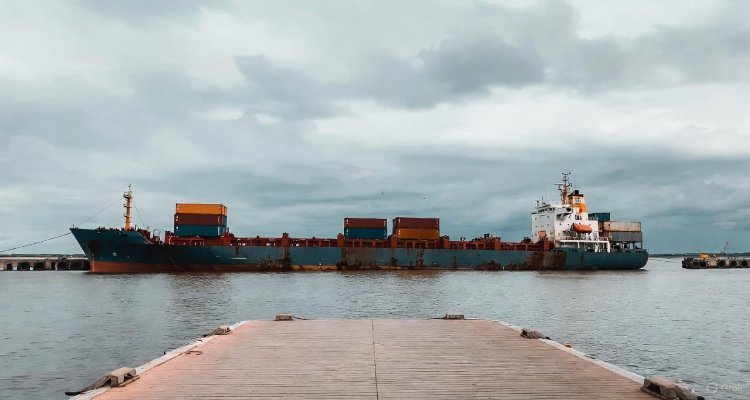The Hidden Ports Where Ghost Ships Dock
Discover the hidden ports where ghost ships dock—abandoned and untracked vessels haunting global trade routes, raising legal and humanitarian challenges.
Introduction: The Mystery of Ghost Ships
Off the world’s busiest shipping lanes and major ports lies a secret maritime limbo where ghost ships—vessels abandoned, untracked, or deliberately concealed—dock in silence. These ships, often carrying stranded crews or serving hidden agendas, inhabit remote or lesser-known ports, revealing a shadowy undercurrent of the global shipping industry seldom seen by the public. Their existence raises urgent questions about ownership, legality, and the human cost of maritime commerce.
Context & Background: Rise of Ghost Ships
Since the early 2020s, the phenomenon of ghost ships has surged. A notable trigger was the COVID-19 pandemic that severely disrupted global supply chains, leaving many vessels stuck at sea or in port. Additionally, geopolitical sanctions, especially those targeting Russian fleets after the Ukraine invasion, have driven ship owners to obscure vessel ownership and tracking, often by disabling AIS transponders or using shell companies. This evasive maneuvering enables them to elude regulatory scrutiny and continue trading illicitly or avoid financial liabilities.
One poignant case is the chemical tanker Bluefoss, abandoned since 2022 at the port of Takoradi, Ghana, with Cuban crew members left unpaid and stranded. Such human tragedies are becoming increasingly common as ships languish, their crews left marooned due to a lack of legal accountability.
Main Developments: Where Ghost Ships Dock
Ghost ships gravitate to certain hidden or less-policed ports around the world. These ports often lack the infrastructure or regulatory enforcement to compel ship owners to fulfill their responsibilities. Ports in West Africa, South Asia, and parts of the Mediterranean have reportedly become havens for these silent vessels.
Moreover, some ghost ships are part of covert operations. Military or special forces “ghost ships” operate near strategic locations without broadcasting their identity or position, complicating international monitoring. For example, the U.S. Navy’s MV Ocean Trader operates near Venezuelan waters under a cloak of secrecy, supporting covert missions in the Caribbean.
The economic impact is multifaceted; abandoned ships clog ports, hinder maritime traffic, and strain international labor and humanitarian laws regarding seafarers’ rights.
Expert Insight & Public Reaction
Experts like Guy Platten, secretary-general of the International Chamber of Shipping, emphasize the legal and ethical void surrounding ghost ships: “If it’s a shadow vessel, you can’t hold the owners to account. They are nowhere to be seen.” Analysts warn such evasion tactics destabilize maritime trade and expose crew members to exploitation.
Public reaction is a blend of concern and intrigue. Maritime workers’ unions advocate for stronger international protocols to protect crews and hold owners accountable. Environmental groups raise alarms about potential ecological risks from neglected vessels. Meanwhile, maritime historians and journalists highlight the eerie silence that ghost ships bring to bustling ports, stirring imaginations about the unseen forces shaping global trade.
Impact & Implications: The Road Ahead
The presence of ghost ships in hidden ports underscores urgent challenges for global maritime governance. Stranded crews need humanitarian support and legal protection, while international bodies must tighten tracking and ownership transparency to prevent exploitative abandonment.
For commerce, ghost ships reduce operational efficiency in ports and complicate supply chains already strained by geopolitical conflicts and pandemics. Militarily, ghost ships operating as covert bases could escalate regional tensions if left unchecked.
Addressing these issues calls for coordinated global efforts: enhanced port authority vigilance, legal reforms supporting seafarers’ rights, and technological advances in ship tracking and ownership verification.
Conclusion: Navigating the Shadow Fleet
Ghost ships lurking in hidden ports reveal the dark underbelly of maritime trade—a space where economic desperation, legal loopholes, and geopolitical strategies converge. As the world increasingly relies on shipping for goods and security, shining a light on these silent vessels becomes imperative. Only through comprehensive international cooperation can the ghostly fleet be managed, protecting lives, commerce, and the oceans themselves.
Disclaimer:This article is based on current research and reports available as of November 2025. The phenomenon of ghost ships involves complex legal, humanitarian, and security aspects that evolve with international maritime regulations.











